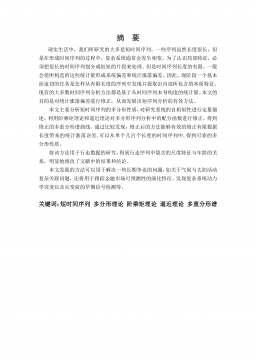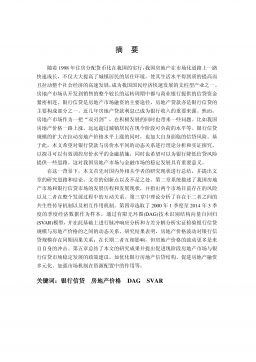应用盐溶液进行压缩空气除湿的理论与实验研究
VIP免费
摘 要
在压缩空气的除湿领域,最常用的是冷冻和吸附除湿,然而冷冻除湿需要电
或蒸汽等高品位能源作为动力。而吸附式除湿运行费用高,吸附剂对油极为敏感,
并且还有二次污染的风险。本文基于空气压缩后与溶液表面的水蒸汽分压力差会
增大,增强除湿过程的理论。提出了使用溶液对压缩空气进行除湿,并围绕此开展
了一系列的研究工作:
首先,文章总结了压缩空气除湿的国内外发展现状,并总结了可行的压缩空
气除湿方法。然后在此基础上,运用热力学、流体力学和传热传质等基本理论,从
火用平衡方程和火用效率出发,分别建立了压缩空气冷冻除湿系统、压缩空气溶液
除湿系统、压缩空气冷冻加吸附除湿系统的火用分析模型。并对各个系统的组成装
置逐个分析其火用损失,火用损失原因,减少火用损失的方法,火用损失在整个系
统中的影响,探讨了各系统中火用损失最大的环节,并进行了系统火用效率的比较,
得出溶液除湿系统的火用效率为 62%,比常规的冷冻除湿系统 58%以及冷冻加吸
附除湿系统 57%节能,并且节能潜力也比常规的除湿系统高。从而在理论上验证
了使用溶液法对压缩空气进行除湿的可行性及优越性。
其次,设计了压缩空气溶液除湿系统,除湿剂采用氯化锂溶液,系统除湿器选
用填料吸收塔。由于在溶液除湿系统中除湿器是核心部件,文章对详细设计计算除
湿器,其采用绝热填料式,填料选用 250Y 型金属孔板波纹填料,除湿塔直径为
500mm,填料高度为 1000mm,除湿器中丝网除沫器网层厚度为 150mm,除沫器
直径为 360mm。喷淋设备中的喷嘴选用实心锥喷嘴。并在此基础上设计搭建了压
缩空气溶液除湿实验台,确定了系统中的设备、测量仪器以及测点分布。
最后,在传热传质理论的基础上,建立了通过离散数值求解的方法进行求解
计算的逆流除湿器内部溶液与空气的热质交换的数值解模型,制订了压缩空气溶
液除湿的数值计算流程图,然后利用数值解模型对压缩空气溶液除湿系统中的除
湿效果进行研究与分析,并得到了除湿量与进口空气温度、压力、含湿量,溶液温
度、浓度,气液比的回归公式为后续研究提供参照。
本课题验证了压缩空气溶液除湿系统的可行性,经分析得出使用溶液法对压
缩空气除湿的效率高达 90%左右。0.8MPa 下,进口含湿量为 18.4g/kg 的压缩空气,
出口含湿量可达 1.39g/kg。所得结论对今后研究溶液法在压缩空气除湿领域的应用
提供了借鉴。
关键词: 压缩空气 火用分析 溶液除湿 数值模拟 回归分析
ABSTRACT
In the field of compressed air dehumidification, the freezing dehumidification and
adsorption dehumidification are commonly used. However, the freezing dehumidification
uses the electric or steam as power, and the adsorption is extremely sensitive to oil with
high cost and the risk of secondary pollution. The dehumidification process will be
enhanced with the increased water vapor pressure difference between the compressed air
and the solution surface, so this paper puts forward a solution dehumidification system to
dehumidify the compressed air. Around these issues, this paper carries out a series of
research work.
Firstly, this paper summarizes the development status of the compressed air
dehumidification and practicable dehumidification methods. Based on the above analysis
and the theory of thermodynamics, fluid mechanics and heat and mass transfer, the exergy
analysis models of compressed air refrigeration dehumidification system, solution
dehumidification system and refrigeration-adsorption dehumidification system are
established according to the exergy balance equation and exergy efficiency. By
calculating the composition exergy losses of all the systems, analyze the reason for exergy
losses, the method of reducing exergy losses, the influence of exergy losses in the whole
system with discussing the maximum segment of exergy losses and comparing the exergy
efficiency. The results show that the exergy efficiency of solution dehumidification
system is 62%, the conventional refrigeration dehumidification system is 58% and the
refrigeration-adsorption dehumidification system is 57%, with the energy saving
efficiency of solution dehumidification system being highest.
Secondly, this paper designs a solution dehumidification system to dehumidify the
compressed air by using LiCl as the desiccant and the packing absorption tower as the
dehumidifier. The dehumidifier is the core component of the solution dehumidification
system. Through the detailed calculation and design, the dehumidifier adopts adiabatic
packing type with 250Y metal mellapale packing, and the dehumidifier has a diameter of
500mm with the height of packing being 1000mm. The diameter of wire mesh demister
is 360mm with its wire mesh thickness being 150mm. Solid wimble nozzles are selected
in the spray equipment. Furthermore, the experiment platform of compressed air solution
dehumidification is built up, and the corresponding equipment, measuring instruments
and the measuring point distribution of the system are also determined.
Finally,based on the theory of heat and mass transfer, this paper establishes a
numerical model of heat and mass transfer between the solution in the countercurrent
dehumidifier and air applying discrete method, and draws a numerical calculation
flowchart about compressed air solution dehumidification. Through the research and
analysis of the efficiency for solution dehumidification system, a regression equation
between the dehumidification and the inlet air temperature, pressure, humidity, solution
temperature, concentration and gas to liquid ratio is obtained, which can provide a
reference to the further research.
This paper proves the feasibility of the compressed air solution dehumidification
system. And the research results show that the compressed air with the inlet moisture
being 18.4g/kg under 0.8MPa, will be treated to 1.39g/kg, which provides the reference
for the application of solution dehumidification in compressed air dehumidification.
Key Word: Compressed Air, Exergy Analysis, Solution Dehumidification,
Numerical Simulation, Regression Analysis
目录
中文摘要
ABSTRACT
第一章 绪论 ..................................................................................................................... 1
1.1 课题来源及研究意义 ........................................................................................ 1
1.2 压缩空气除湿的国内外发展现状 .................................................................... 3
1.2.1 国外发展现状 ............................................................................................. 3
1.2.2 国内发展现状 ............................................................................................. 3
1.3 压缩空气除湿方法综述 .................................................................................... 4
1.3.1 冷冻干燥法 .................................................................................................. 4
1.3.2 吸附干燥法 .................................................................................................. 5
1.3.3 可溶性盐吸收法 .......................................................................................... 7
1.3.4 液体吸收法 .................................................................................................. 7
1.3.5 压力升降法 .................................................................................................. 8
1.3.6 膜脱湿法 ...................................................................................................... 9
1.4 本课题的研究内容、关键技术及研究路线 .................................................. 10
1.4.1 本课题主要研究内容 ............................................................................... 10
1.4.2 研究关键技术 ........................................................................................... 10
1.4.3 研究路线 .................................................................................................... 10
第二章 压缩空气除湿热力学分析 .............................................................................. 12
2.1 火用分析基本理论概述 ................................................................................... 12
2.2 压缩空气除湿系统火用分析 .......................................................................... 13
2.2.1 冷冻除湿系统火用分析 ........................................................................... 13
2.2.2 溶液除湿系统火用分析 ........................................................................... 15
2.2.3 冷冻加吸附除湿系统火用分析 ............................................................... 18
2.3 系统火用分析计算比较 .................................................................................. 20
2.3.1 冷冻除湿系统的火用分析计算 ............................................................... 20
2.3.2 溶液除湿系统的火用分析计算 ............................................................... 22
2.3.3 冷冻加吸附除湿系统的火用分析计算 ................................................... 24
2.3.4 三种系统的火用效率比较 ....................................................................... 26
2.4 本章小结 .......................................................................................................... 28
第三章 压缩空气溶液除湿系统的设计 ...................................................................... 29
3.1 压缩空气溶液除湿系统的设计 ...................................................................... 29
3.2. 除湿剂的选择 ................................................................................................. 31
3.3. 除湿器的设计计算 ......................................................................................... 32
3.4. 系统设计目的 ................................................................................................. 39
3.5. 系统设备及测试仪器 ..................................................................................... 40
3.5.1 系统设备组成 ........................................................................................... 40
3.5.2 测试仪器简介 ........................................................................................... 44
3.6 本章小结 .......................................................................................................... 44
第四章 除湿器模型的建立 .......................................................................................... 45
4.1 填料除湿器的数学模型 .................................................................................. 45
4.1.1 填料除湿的机理分析 ............................................................................... 45
4.1.2 填料除湿的数学模型建立 ....................................................................... 46
4.2 模型中未知参数的确定 .................................................................................. 53
4.2.1 有效润湿面积 ............................................................................................ 53
4.2.2 传热传质系数的确定 ................................................................................ 54
4.2.3 湿空气参数的确定 ................................................................................... 55
4.2.4 氯化锂溶液参数的确定 ........................................................................... 58
4.3 除湿器性能评价指标 ...................................................................................... 60
4.4 模型的计算程序 .............................................................................................. 62
4.5 模拟结果分析 .................................................................................................. 64
4.5.1 不同空气进口含湿量下的性能分析 ........................................................ 64
4.5.2 不同空气进口温度下的性能分析 ............................................................ 66
4.5.3 不同气液比下的性能分析 ........................................................................ 67
4.5.4 不同溶液进口温度下的性能分析 ............................................................ 68
4.5.5 不同溶液进口浓度下的性能分析 ............................................................ 69
4.5.6 不同压力下的性能分析 ............................................................................ 70
4.6 模拟结果的回归分析 ...................................................................................... 71
4.7 本章小结 .......................................................................................................... 75
第五章 结论与展望 ...................................................................................................... 77
5.1 结论 .................................................................................................................. 77
5.2 溶液法在压缩空气除湿领域的应用 .............................................................. 78
5.3 有待继续研究的内容 ...................................................................................... 78
符号表 ............................................................................................................................ 79
参考文献 ........................................................................................................................ 81
在读期间公开发表的论文和承担科研项目及取得成果 ............................................ 85
致谢 ................................................................................................................................ 86
相关推荐
-
七年级数学下册(易错30题专练)(沪教版)-第13章 相交线 平行线(原卷版)VIP免费
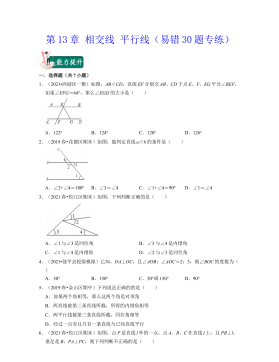
 2024-10-14 25
2024-10-14 25 -
七年级数学下册(易错30题专练)(沪教版)-第13章 相交线 平行线(解析版)VIP免费
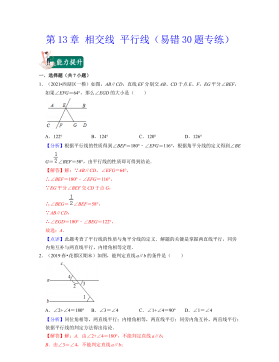
 2024-10-14 28
2024-10-14 28 -
七年级数学下册(易错30题专练)(沪教版)-第12章 实数(原卷版)VIP免费
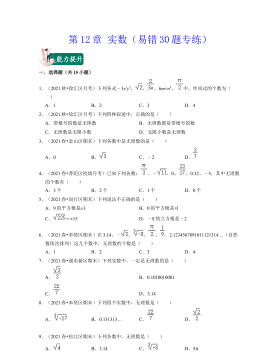
 2024-10-14 25
2024-10-14 25 -
七年级数学下册(易错30题专练)(沪教版)-第12章 实数(解析版)VIP免费
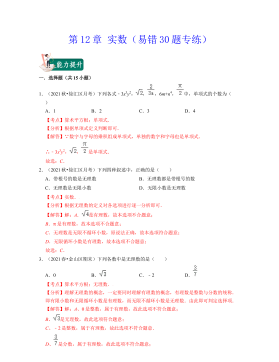
 2024-10-14 19
2024-10-14 19 -
七年级数学下册(压轴30题专练)(沪教版)-第15章平面直角坐标系(原卷版)VIP免费
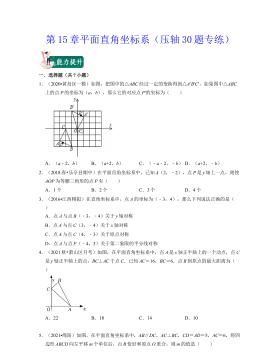
 2024-10-14 18
2024-10-14 18 -
七年级数学下册(压轴30题专练)(沪教版)-第15章平面直角坐标系(解析版)VIP免费

 2024-10-14 27
2024-10-14 27 -
七年级数学下册(压轴30题专练)(沪教版)-第14章三角形(原卷版)VIP免费

 2024-10-14 18
2024-10-14 18 -
七年级数学下册(压轴30题专练)(沪教版)-第14章三角形(解析版)VIP免费

 2024-10-14 30
2024-10-14 30 -
七年级数学下册(压轴30题专练)(沪教版)-第13章 相交线 平行线(原卷版)VIP免费
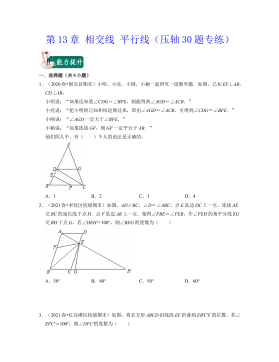
 2024-10-14 25
2024-10-14 25 -
七年级数学下册(压轴30题专练)(沪教版)-第13章 相交线 平行线(解析版)VIP免费
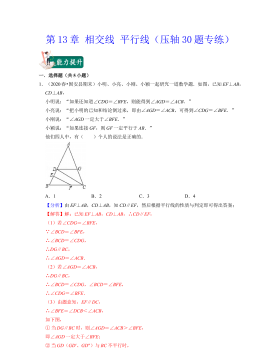
 2024-10-14 22
2024-10-14 22
作者:侯斌
分类:高等教育资料
价格:15积分
属性:90 页
大小:3.8MB
格式:PDF
时间:2025-01-09
相关内容
-

七年级数学下册(压轴30题专练)(沪教版)-第15章平面直角坐标系(原卷版)
分类:中小学教育资料
时间:2024-10-14
标签:无
格式:DOCX
价格:15 积分
-

七年级数学下册(压轴30题专练)(沪教版)-第15章平面直角坐标系(解析版)
分类:中小学教育资料
时间:2024-10-14
标签:无
格式:DOCX
价格:15 积分
-

七年级数学下册(压轴30题专练)(沪教版)-第14章三角形(原卷版)
分类:中小学教育资料
时间:2024-10-14
标签:无
格式:DOCX
价格:15 积分
-

七年级数学下册(压轴30题专练)(沪教版)-第14章三角形(解析版)
分类:中小学教育资料
时间:2024-10-14
标签:无
格式:DOCX
价格:15 积分
-

七年级数学下册(压轴30题专练)(沪教版)-第13章 相交线 平行线(原卷版)
分类:中小学教育资料
时间:2024-10-14
标签:无
格式:DOCX
价格:15 积分


